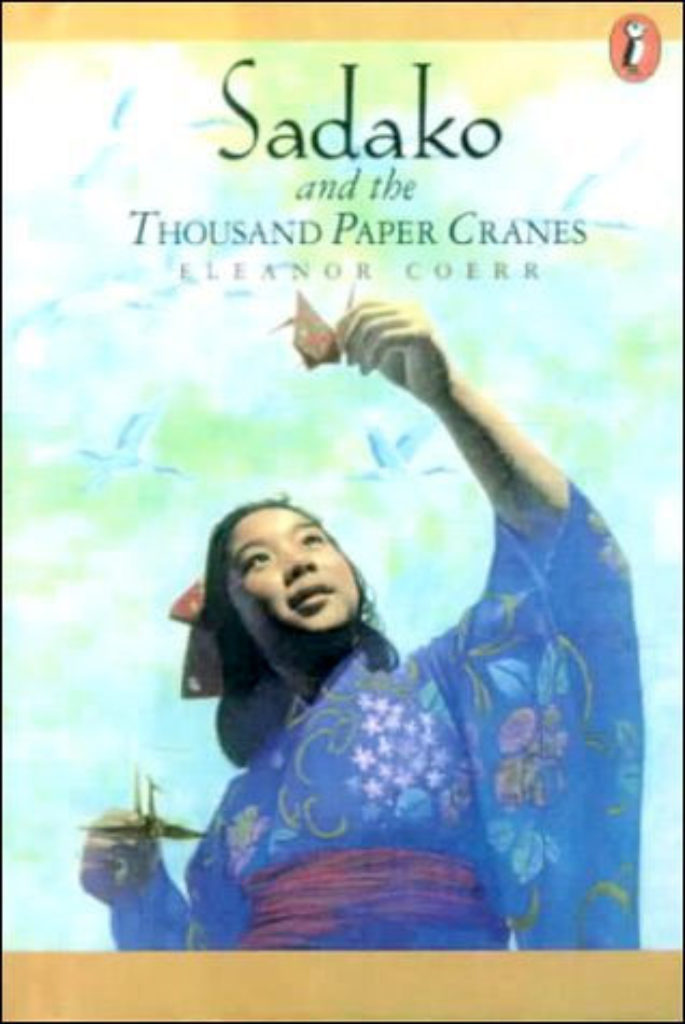This book has been reviewed by Focus on the Family’s marriage and parenting magazine.

In 1954, 11-year-old Sadako Sasaki lives in Japan with her family. Sadako is a talented runner and hopes to qualify for the junior high team the following year. She begins having dizzy spells after her long runs but is afraid to mention them to her family. One day she collapses at school. Her father takes her to the hospital, where the doctor tells her she has leukemia.
Leukemia, also called the atom bomb disease, is not uncommon in Sadako’s area. Although the bomb was dropped on Hiroshima almost a decade earlier, its poisonous radiation still fills the air. Sadako knows many who enter the hospital with leukemia never return home.
Sadako’s friend Chizuko cheers her up by folding a crane out of gold paper. Chizuko reminds her of an old legend: If a sick person folds 1,000 paper cranes, the gods will make her well. Sadako is inspired. Once Chizuko teaches her to make the cranes, Sadako works on creating a flock. Her brother helps her hang each bird from the ceiling of her hospital room.
As months pass, Sadako’s energy waxes and wanes. She meets a boy younger than herself in the hospital and later learns he has died of leukemia. She never gives up hope for her own healing and continues folding cranes.
In July of 1955, Sadako shows some improvement and is allowed to return home. Her condition quickly worsens and she’s readmitted to the hospital for intense treatments. She models a kimono her mother makes her and finishes 644 cranes before her weakness overpowers her. With family at her bedside and her cranes flying overhead, Sadako dies on Oct. 25, 1955 at age 12.
Sadako’s classmates fold the remaining 356 cranes so she can be buried with 1,000 birds. One class collects and reprints Sadako’s letters and journal, and soon, all of Japan knows her story. A few years later in a Hiroshima peace park, a statue is erected in her honor.
None
Sadako and her Japanese family hold many beliefs, ceremonies and traditions surrounding luck and the spirits of the dead. Buddhist priests play a role in a city memorial ceremony. Sadako hopes the city’s temple bells will ring out the evils of the past year. Father prays for the spirits of their ancestors and for protection from the atom bomb’s radiation. Sadako hangs her hopes on a proverb that says the gods will give health to a sick person who folds 1,000 paper cranes. She feels the birds are good omens.
Sadako’s loving, supportive parents try to put on brave faces as they watch their daughter’s illness worsen. A doctor and nurse at the hospital compassionately treat and encourage Sadako.
None
None
Get free discussion questions for this book and others, at FocusOnTheFamily.com/discuss-books.
You can request a review of a title you can’t find at [email protected].
Book reviews cover the content, themes and worldviews of fiction books, not their literary merit, and equip parents to decide whether a book is appropriate for their children. The inclusion of a book’s review does not constitute an endorsement by Focus on the Family.